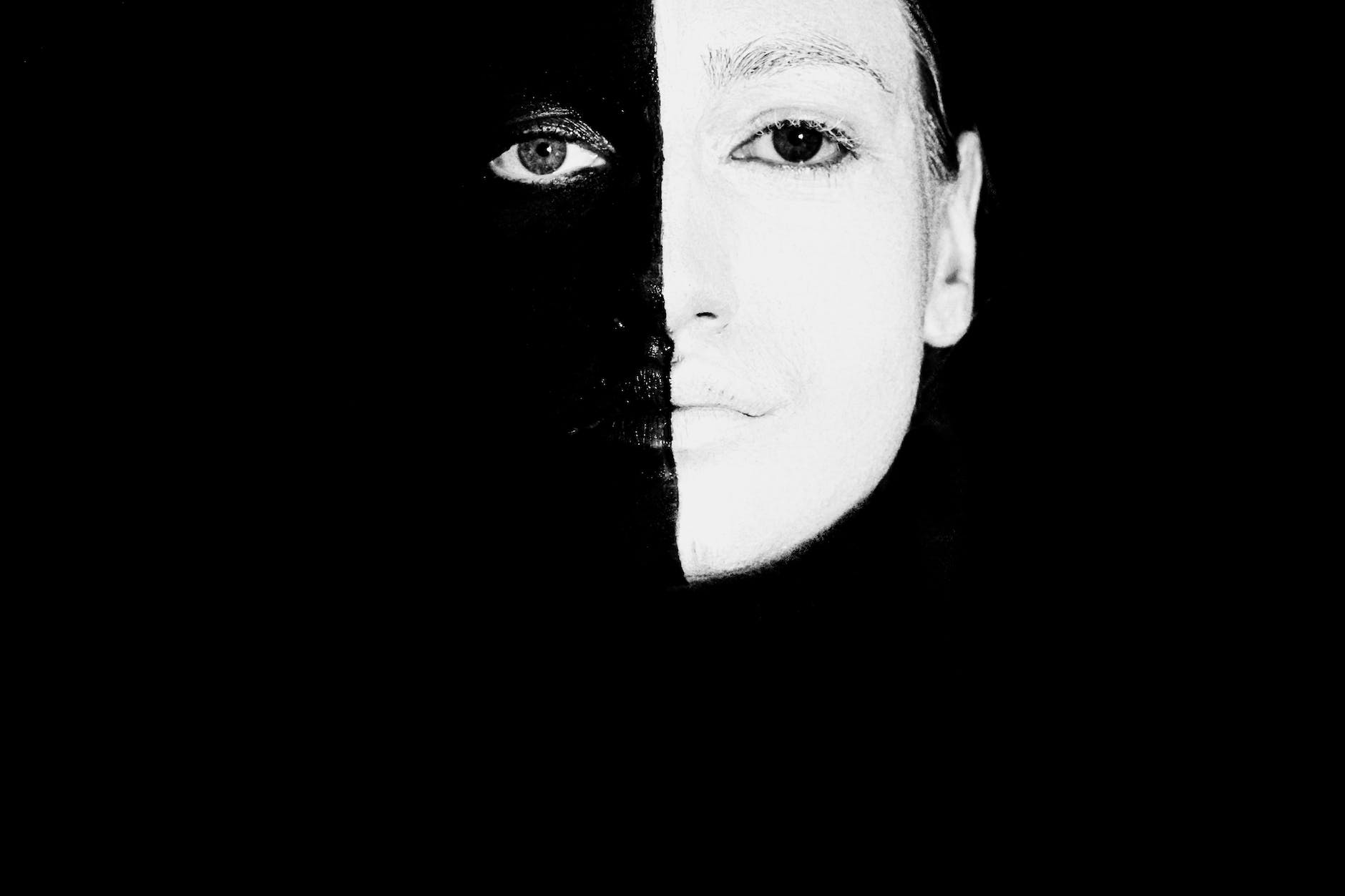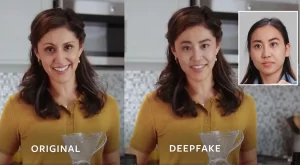Deepfake technology
Deepfake technology is a form of artificial intelligence (AI) that can be used to create highly realistic, computer-generated videos or images. The technology uses deep learning, a type of machine learning, to analyze and mimic the facial expressions, movements, and speech patterns of real people. This allows deepfake technology to create videos or images that appear to be of real people, but are actually computer-generated.
Deepfakes can be used for a variety of purposes, such as creating realistic special effects in movies or video games, or impersonating real people in videos or images. However, deepfakes can also be used for malicious purposes, such as creating fake news or spreading misinformation. This can be a serious concern as deepfake technology becomes more advanced and harder to detect.
This technology has become increasingly accessible in recent years, with the development of open-source deepfake software and the availability of large amounts of training data. This has led to a rise in the number of deepfake videos and images being shared online, raising concerns about the potential for deepfakes to be used for malicious purposes.
To detect and prevent the spread of deepfakes, researchers and companies are working on developing methods for detecting deepfake videos and images, such as analyzing the subtle movements of a person’s face or the patterns of light in an image. However, as the technology continues to advance, it’s becoming increasingly difficult to detect deepfakes, making it important for people to be critical when consuming media and verify the authenticity of the sources.
How deepfake created all process step by step
-
Collecting training data: The first step in creating a deepfake is to collect a large dataset of images and videos of the person or people you want to create a deepfake of. This could include a wide range of images and videos, such as public photos, videos from social media, or even personal photos and videos.

-
Preparing the data: Once you have a dataset, you need to prepare the data for use in the deepfake model. This involves cropping and resizing the images and videos, and extracting the facial features of the people in the dataset.

-
Training the model: The next step is to train the deepfake model using the prepared data. This involves using a deep learning algorithm, such as a generative adversarial network (GAN), to analyze the dataset and learn how to mimic the facial expressions and movements of the people in the dataset. This process can take several days or even weeks, depending on the size of the dataset and the complexity of the model.

-
Creating the deepfake: Once the model is trained, you can use it to create a deepfake. This typically involves providing the model with a source video or image of a person, and then having the model generate a new video or image that mimics the facial expressions and movements of the person in the source video or image.

-
Post-processing: After creating the deepfake, you may need to perform some post-processing, such as smoothing out any rough edges, adjusting the lighting and color, or adding sound.
For example, Let’s consider a scenario where we want to create a deepfake of a celebrity. First, we would collect a large dataset of images and videos of the celebrity from various sources, such as social media, public events, and interviews. Next, we would prepare the data by cropping and resizing the images and videos, and extracting the facial features of the celebrity. Then, we would train a deepfake model using this data, which could take several days or weeks. Once the model is trained, we can use it to generate a new video of the celebrity that mimics their facial expressions and movements, post-processing the video if necessary.
How deepfake detected all process step by step

-
Visual analysis: One of the most common methods for detecting deepfakes is to analyze the visual content of a video or image. This can include looking for signs of manipulation, such as unnatural facial movements or lighting, or analyzing the patterns of light in an image.

-
Audio analysis: Another method is to analyze the audio content of a video. This can include looking for signs of manipulation, such as unnatural speech patterns or background noise, or analyzing the pitch and frequency of the audio.
-
Metadata analysis: Metadata is data that is embedded in a video or image file. This data can contain information such as the date and time the file was created, the device used to create the file, or the software used to create the file. By analyzing this data, it is possible to detect if the file is a deepfake or not.
-
Machine Learning based detection: Machine learning algorithms can also be trained to detect deepfakes by analyzing the patterns and features of deepfake videos or images, and comparing them to real videos or images.

-
Source and context verification: Finally, it’s important to verify the source and context of a video or image. If a video or image appears on a reputable news website or social media platform, it is less likely to be a deepfake. However, if a video or image appears on a less reputable website or social media platform, it is more likely to be a deepfake.

-
-
For example, Let’s consider a scenario where we want to detect a deepfake video of a celebrity. First, we would analyze the visual content of the video, looking for signs of manipulation, such as unnatural facial movements or lighting. Next, we would analyze the audio content of the video, looking for signs of manipulation, such as unnatural speech patterns or background noise. Then, we would analyze the metadata of the video, looking for information such as the date and time the file was created, the device used to create the file, or the software used to create the file. We would also use machine learning based deepfake detection algorithm to detect if the video is deepfake or not. Finally, we would verify the source and context of the video, such as if the video has been posted on a reputable news website or social media platform. By using these methods in combination, we can get a high level of accuracy in detecting deepfakes.
Different types of deepfakes
There are several types of deepfakes, including:
-
Face-swapping deepfakes: These are the most common type of deepfakes and involve replacing the face of a person in a video or image with the face of another person. For example, a deepfake video could be created by replacing the face of an actor in a movie with the face of a different actor.
-
Voice-cloning deepfakes: These deepfakes involve replacing the voice of a person in a video or audio recording with the voice of another person. For example, a deepfake audio recording could be created by replacing the voice of a politician in a speech with the voice of a different politician.
-
Object-insertion deepfakes: These deepfakes involve adding or removing objects from a video or image. For example, a deepfake video could be created by adding a person to a crowd scene or removing a person from a group photo.
-
Head-swapping deepfakes: These deepfakes involve replacing the head of a person in a video or image with the head of another person. For example, a deepfake vid
-
Body-swapping deepfakes: These deepfakes involve replacing the body of a person in a video or image with the body of another person. For example, a deepfake video could be created by replacing the body of a actor in a movie with the body of a model.
-
Audio-based deepfakes: These deepfakes involve manipulating the audio of a video or audio recording. For example, a deepfake audio recording could be created by changing the words spoken by a person in a speech, or adding background noise to an audio recording.
-
3D-based deepfakes: These deepfakes involve using 3D models to create deepfakes. For example, a deepfake video could be created by using a 3D model of a person’s face and body to create a video of them doing something they never actually did.
-
Gif deepfakes: These deepfakes are animated gifs that are manipulated to make it look like the person is doing something they never actually did.
For example, Let’s consider a scenario where we want to create a deepfake video. We could create a face-swapping deepfake by replacing the face of an actor in a movie with the face of a different actor, or we could create a body-swapping deepfake by replacing the body of a actor in a movie with the body of a model. Another example, creating a voice-cloning deepfake by replacing the voice of a politician in a speech with the voice of a different politician.
Models to create and detect deepfakes
There are several types of models used to create and detect deepfakes, including:
-
Generative Adversarial Networks (GANs): GANs are a type of neural network that consist of two parts: a generator and a discriminator. The generator creates new images or videos, while the discriminator evaluates the authenticity of the images or videos. GANs are commonly used to create deepfakes, as they can be trained to generate realistic images or videos of people.
-
Autoencoders: Autoencoders are a type of neural network that are trained to reconstruct an input image or video. Autoencoders can be used to create deepfakes by training the network on a dataset of real images or videos, and then using the network to generate new images or videos.
-
Convolutional Neural Networks (CNNs): CNNs are a type of neural network that are commonly used in computer vision tasks. CNNs can be used to detect deepfakes by analyzing the features of an image or video and comparing them to a dataset of real images or videos.
-
Recurrent Neural Networks (RNNs): RNNs are a type of neural network that are commonly used in natural language processing tasks. RNNs can be used to detect deepfakes by analyzing the audio of a video and comparing it to a dataset of real audio.
-
Long Short-Term Memory (LSTM) Networks: LSTMs are a type of RNN that are able to remember information for longer periods of time. LSTMs can be used to detect deepfakes by analyzing the audio or video over a longer period of time, and comparing it to a dataset of real audio or video.
-
Multi-task Learning Models: Multi-task learning models are neural networks that are trained to perform multiple tasks at once. These models can be used to detect deepfakes by training them to detect multiple types of deepfakes at once, such as face-swapping deepfakes, voice-cloning deepfakes, and object-insertion deepfakes.
-
XceptionNet: XceptionNet is a type of CNN that has been trained to detect deepfakes using the FaceForensics++ dataset. It is trained to classify a video as real or manipulated and it has been shown to be quite effective at detecting deepfakes.
-
Two-stream CNN: Two-stream CNN is a type of CNN that uses two different inputs, one for the image and one for the motion information, to detect deepfakes. This network is trained to detect deepfakes by analyzing both the image and motion information of a video, and comparing it to a dataset of real videos.
For example, in creating a deepfake video, GANs are commonly used to create deepfakes, as they can be trained to generate realistic images or videos of people. Autoencoders can be used to create deepfakes by training the network on a dataset of real images or videos, and then using the network to generate new images or videos. In detecting deepfake video, CNNs are a type of neural network that are commonly used in computer vision tasks. CNNs can be used to detect deepfakes by analyzing the features of an image or video and comparing them to a dataset of real images or videos. RNNs are a type of neural network that are commonly used in natural language processing tasks. RNNs can be used to detect deepfakes by analyzing the audio of a video and comparing it to a dataset of real audio.
Deepfake technology uses:
-
-
Entertainment: Deepfakes can be used to create realistic digital avatars of actors and actresses, allowing them to star in movies and TV shows long after they’ve retired or passed away. For example, a deepfake of Peter Cushing was used in the 2016 Star Wars film Rogue One.
-
News and journalism: Deepfakes can be used to create realistic simulations of news events, allowing journalists to show what might have happened in a particular situation without actually filming it.
-
Advertising: Companies can use deepfakes to create realistic digital avatars of celebrities to endorse their products.
-
Virtual Reality: Deepfakes can be used to create realistic digital avatars of people, allowing them to interact with users in virtual reality environments.
-
Personalization: Deepfakes can be used to create personalized messages, such as birthday greetings, from celebrities or loved ones who are no longer with us.
-
Education: Deepfake technology can be used to create realistic simulations of historical events, allowing students to experience them in a more engaging way.
-
Research: Deepfake technology can be used to conduct research in fields such as psychology, sociology, and human-computer interaction by creating realistic simulations of human behavior.
-
Political Campaigning: Deepfakes can be used to create realistic videos of politicians, which can be used for campaigning.
-
Law Enforcement: Deepfakes can be used to create realistic simulations of crime scenes, allowing law enforcement to better understand and solve crimes.
-
Military: Deepfakes can be used to create realistic simulations of battlefield scenarios, allowing soldiers to train in a safe and controlled environment.
-
It’s important to note that deepfake technology can be used for malicious purposes as well, such as creating fake videos to spread misinformation or defame someone. Therefore, it is important to use the technology responsibly and to develop ways to detect deepfake
Blockchain technology can be used to prevent deepfakes
Blockchain technology can potentially be used to prevent deepfakes by providing a tamper-proof, decentralized ledger that stores information about the authenticity of digital content. In this system, digital signatures and hashes are recorded on the blockchain to prove that the content was created and distributed by a trusted source.
For example, if a video is recorded and verified using blockchain technology, it would be difficult for anyone to create a deepfake of that video because the blockchain would have an unalterable record of its authenticity. The blockchain would be able to validate that the video was created by a trusted source, and it would not be possible for someone to change or manipulate the video without the blockchain detecting the change.


